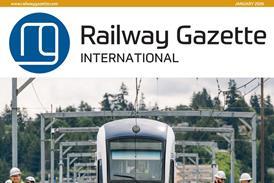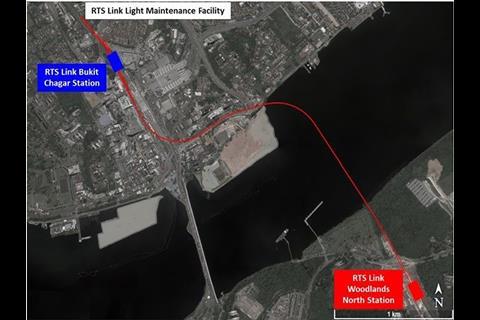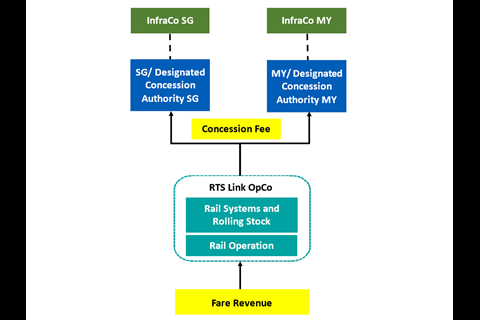ASIA: A bilateral agreement setting out how the Johor Bahru – Singapore Rapid Transit System Link cross-border metro project is to be undertaken was signed by the governments of Singapore and Malaysia on January 16.
The agreement covers technical, safety and security requirements; the commercial, financing, procurement and regulatory frameworks; and the border arrangements. Opening is planned by December 2024.
The RTS Link is to cross the Straits of Johor via a 25 m high bridge, and would then go underground to reach Woodlands North station in Singapore.
Each country is to appoint an infrastructure company to fund, build, own, maintain and renew the civil works and stations within its territory. Malaysia’s InfraCo will be Prasarana, while Singapore’s InfraCo will be Land Transport Authority.
A joint venture of Prasarana and SMRT is to be incorporated by June 30, and would design, build, finance, operate, maintain and renew the operating assets including rolling stock, track and railway systems under a 30-year concession agreement which is expected to be signed by September 30.
This operating company would pay a concession fee to the two countries in exchange for the right to collect revenue from the fares, which would be unregulated. Subsequent operating concessions would be awarded by open tender.
To benefit from economies of scale, the RTS Link is to utilise the same rolling stock, signalling, communication and control technologies as the Thomson-East Coast Line which is currently under construction in Singapore and will have its northern terminus at Woodlands North. Heavy maintenance is to be outsourced to TEL operator SMRT Trains and undertaken at the TEL’s Mandai depot, and there would also be a light maintenance facility at Bukit Chagar.
Customs, immigration and quarantine facilities are to be co-located in both Bukit Chagar and Woodlands North, with passengers clearing both sets of border controls at their point of departure.
The RTS Link’s capacity of up to 10 000 passengers/h/direction would be a significant increase on the 300 passengers/h/direction of the existing KTMB Tebrau Shuttle trains, which would cease six months after the start of RTS Link services.
‘It is an ambitious project, it is quite complicated because it has to start above ground, cross the water, go underground, and then there is a [border control] underground that must connect, then the people can come out and go onto the Singapore MRT trains’, Singapore’s Prime Minister Lee Hsien Loong told local media. ‘But we hope we will get it up by 2024, and I do not see any reason why that should not be possible. Like all projects which involve more than one country and expand more than one term of government, it requires long-term commitment. The commitment is formalised and the agreement which we signed between the two governments today, is a binding agreement, and whoever is the government on either side, well this is an agreement which they inherit and which they are party to.’











